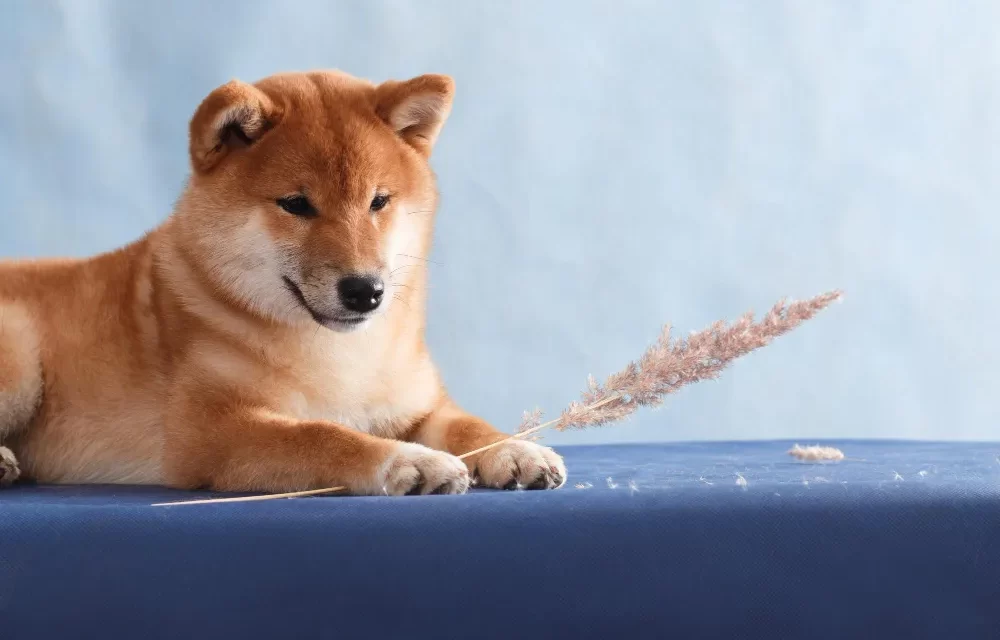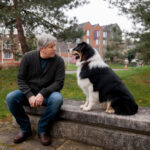Have you ever seen a Shiba Inu in action? One minute, they’re calmly surveying their kingdom, their fox-like eyes watching with quiet dignity. The next, they’re chasing a squirrel at breakneck speed with a sudden burst of energy and precision that’s almost too impressive to believe. These dogs aren’t just cute—they’re a force of nature. But what makes them tick, and what does it really take to live with one of these stubborn yet endearing companions?
If you’re thinking about adding a Shiba Inu to your life, or even if you’re simply curious about what makes them such a captivating breed, you’re in the right place.
In this blog, we’ll delve into everything you need to know about the Shiba Inu—from their fascinating history to their distinctive looks, personality quirks, and care requirements. Whether you’re considering adopting one or just want to understand why they’ve captured hearts around the world, this post will answer all your burning questions.
Key Takeaways
-
The ancient Japanese breed dates back over 2,300 years.
-
Originally bred to hunt small game in mountainous regions
-
Also known as the “Brushwood dog” due to their coat and hunting terrain
-
Recognised by the American Kennel Club (AKC) as a non-sporting breed
-
Known for independence, intelligence, and a bold personality
-
Requires early training, consistent structure, and mental stimulation
-
Clean, low-odor dogs with a cat-like grooming habit
-
Loyal to their family but often frequently distant from outsiders
-
Average lifespan: 13–16 years
-
Not ideal for first-time dog owners or those seeking a super affectionate breed
-
Needs both physical exercise and mental engagement
Shiba Inu Breed History
Imagine a small, agile dog darting through the misty forests of ancient Japan, its keen eyes fixed on small game as it follows its hunter through rugged terrain. That’s the Shiba Inu’s legacy. The Shiba Inu, one of the oldest and smallest native dog breeds in Japan, carries a rich history of the Shiba Inu dog breed that dates back over 2,300 years. Originally bred to hunt small game, such as birds and rabbits, in Japan’s mountainous regions, this breed’s name, “Shiba,” meaning “brushwood,” likely refers to either their hunting grounds or their reddish coat, which blended seamlessly with the natural environment.
The Shiba Inu population almost went extinct during World War II as a result of sickness and food shortages. Fortunately, a few dogs were preserved, but thanks to dedicated breeding programs, this remarkable breed of dog was revived. Today, the Shiba Inu remains one of Japan’s most beloved breeds and has gained significant popularity worldwide, particularly in countries such as the United States and Australia, including a strong presence in the American Kennel Club (AKC) as a recognised and popular dog breed.
Types of Shiba Inu (By Region)
Historically, three regional varieties of Shiba Inus developed:
-
Mino Shiba: Known for its deep mahogany colour.
-
San’in Shiba: Larger, often black.
-
Shinshu Shiba: Characterised by rounder eyes and a sickle-shaped tail.
The breed faced near extinction during World War II due to bombings and a post-war outbreak of distemper. Fortunately, dedicated breeding programs helped revive the Shiba Inu, preserving its legacy.
Physical Characteristics of the Shiba Inu
Shibas are incredibly stubborn (other people talk about different breeds as stubborn, but Shibas will look you dead in the face and do the complete opposite) and need early training.
They are super bright and will potty-train themselves with guidance; however, make sure you have games with stimulation, or your little one will find wonder in the corner of your wall. They are intelligent and need distractions and mental games to help foster them.
Physical Appearance
The Shiba Inu is a small to medium-sized dog with a strong, athletic build designed for agility and endurance. Every part of the Shiba’s anatomy speaks to efficiency and movement, as they were originally trained to traverse the steep terrain of Japan.
Size & Weight
Males typically stand about 14.5–16.5 inches tall at the shoulder, with females slightly smaller at 13.5–15.5 inches. Their weight ranges from 17 to 23 pounds, making them suitable for both urban and rural environments.
Click here to read more about key differences between male and female Shiba Inu dog breed.
Coat & Colours
Shibas have a plush double coat. The undercoat is thick and soft, while the outside coat is rigid and straight. Standard coat colours include:
-
Red (most iconic and widely recognised)
-
Sesame (red with black-tipped hairs)
-
Black and tan
-
Cream (less preferred in Japan but still loved by many globally)
Face & Expression
One of their most striking features is their expressive, almond-shaped eyes that give them an alert and confident look. They look more like foxes because to their curled tail and erect, triangular ears.
Temperament and personality
Shibas are renowned for their bravery, intelligence, and independence. While loyal to their families, they can be aloof with strangers. They’re known for their cleanliness, quiet nature, and strong prey drive. Early training and socialisation are key to managing their stubborn streak.
This combination of independence and loyalty can be both a blessing and a challenge, but for the right owner, it makes the Shiba Inu an enriching companion.
Health Considerations
Shiba Inus are generally a healthy and resilient breed, but like all dogs, they’re prone to a few genetic and breed-specific health issues. Responsible ownership includes regular vet visits, a balanced diet, and staying informed about potential concerns.
Common Shiba Inu Health Issues
While generally healthy, Shiba Inus may be prone to a few hereditary conditions:
-
Allergies – Skin and food sensitivities causing itching or ear infections.
-
Hip Dysplasia – Arthritis that may result from abnormal hip development.
-
Patellar Luxation – Kneecap dislocation, often seen as limping or skipping steps.
-
Glaucoma – Increased eye pressure that can affect vision.
-
Progressive Retinal Atrophy (PRA) – Gradual loss of eyesight.
-
Hypothyroidism – Can cause weight gain, lethargy, and coat issues.
Regular vet checkups and early detection can help manage these conditions effectively.
Prevention & Care:
-
Schedule annual vet checkups to catch issues early.
-
Keep vaccinations and parasite prevention up to date.
-
Maintain a healthy weight to reduce joint stress.
-
Ask your breeder for health clearances if you’re buying a puppy.
By staying proactive, Shiba owners can help their dogs enjoy long, healthy lives, often up to 16 years or more.
Shiba Inu Lifespan and Health
Shiba Inus are a generally healthy and hardy breed, with an average lifespan of 13 to 16 years. The oldest Shiba in the Guinness Book of Records lived to be 26 years old.
With proper care, including routine vet visits, vaccinations, parasite prevention, and a healthy diet, daily exercise, and ample mental stimulation, many Shiba Inus live well into their teens. They’re not just cute companions; they’re long-term ones too. With the right care, Shibas can live up to 16 years, bringing joy and loyalty into your life for many years to come.
Food and Diet: What to Feed Your Shiba Inu
Shiba Inus thrive on a well-balanced, high-quality diet that matches their energy levels and age. Whether you opt for dry kibble, raw, or home-cooked meals, always ensure your Shiba gets the nutrients they need.
Key Nutritional Needs:
-
Protein: Essential for muscle maintenance. Look for named meat sources, such as chicken, beef, or salmon.
-
Fats: Healthy fats like omega-3s promote skin and coat health.
-
Carbohydrates: Brown rice, sweet potatoes, or oats for steady energy.
-
Vitamins and Minerals: Support immune function and bone strength.
Avoid: Artificial preservatives, excessive fillers, and low-quality by-products.
Feeding Tip: Shibas can be finicky eaters and may regulate their food intake. Stick to a consistent feeding schedule and avoid free-feeding.
Shiba Inu Personality: What to Expect
The Shiba Inu isn’t your typical lapdog—and that’s part of their charm. With a bold spirit and a cat-like sense of independence, this breed is known for its quirky, confident personality.
Independent but Loyal
Shibas are famously independent and strong-willed. They often prefer to do things on their terms, which can come across as aloofness. But beneath that calm exterior lies a fiercely loyal companion who forms a deep bond with their family.
Alert and Intelligent
Shibas are sharp and observant. They’re quick learners, but also quick to decide when not to listen. Training requires patience, consistency, and a sense of humour. They react most favourably to praise rather than severe punishment.
Clean and Quiet
Shibas are one of the cleanest dog breeds. They usually don’t smell like dogs and groom themselves like cats. They’re also reasonably quiet, but when they do vocalise, it might be the famous “Shiba scream”—a dramatic yowl they unleash when unhappy or excited.
Not Always Social Butterflies
While they adore their humans, Shibas are often reserved around strangers and may be wary of other dogs, especially of the same sex. Early socialisation is crucial to helping them grow into well-mannered companions.
Great for the Right Home
The ideal Shiba owner understands their need for space, mental stimulation, and clear boundaries. Shibas like attention on their terms, however they are not clingy.
Pros and Cons of Owning a Shiba Inu
| PROS | CONS |
|
|
How often does a Shiba Inu shed?
Shiba Inus shed moderately year-round, but they experience heavy shedding twice a year during seasonal changes—typically in spring and fall. These are known as their “coat blowing” periods, when they shed their thick undercoat in large clumps.
For most of the year, a weekly brushing helps manage loose hairs and keeps their coat in good condition. But during shedding seasons, daily brushing is highly recommended to reduce fur buildup and maintain skin health.
Thanks to their natural grooming instincts and relatively clean habits, Shiba Inus don’t require frequent bathing, and they rarely have a strong odor. However, regular grooming helps control shedding, keeps allergens at bay, and strengthens your bond with your dog.
Quick Grooming Tips:
-
Use a slicker brush or de-shedding tool during coat-blowing periods
-
Trim nails and clean ears regularly
-
Start grooming routines early in puppyhood
-
Bathe only when necessary—typically every few months
What Are Common Behavior Problems in Shiba Inus?
Shiba Inus are smart, confident dogs—but they can also be a bit tricky to handle, especially if you’re not used to independent breeds. Here are some common behavior problems to watch out for:
1. Stubborn and Independent: Shibas like to do things their own way. Training them takes patience and consistency because they don’t always like to follow commands.
2. Aggressive or Territorial: Some Shibas can be protective of their food, toys, or space. They might not always get along with other dogs. Socializing them early helps a lot.
3. Escape Artists: These dogs love to explore and can run off if given the chance. Always use a leash on walks and make sure your yard is secure.
4. Shy with Strangers: Shibas can be aloof or wary around new people. They may not be super friendly at first, but gentle exposure to new people can help.
5. The “Shiba Scream”: They don’t bark a lot, but they’re famous for a loud scream when they’re upset, scared, or don’t want to do something—like getting their nails clipped.




